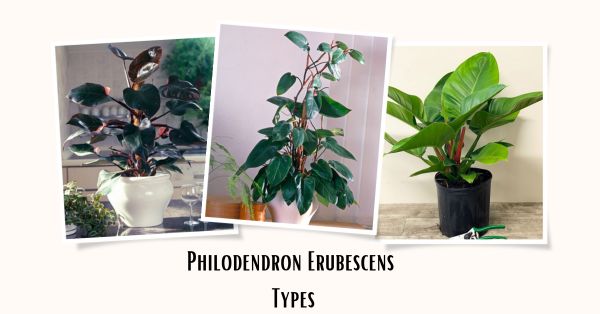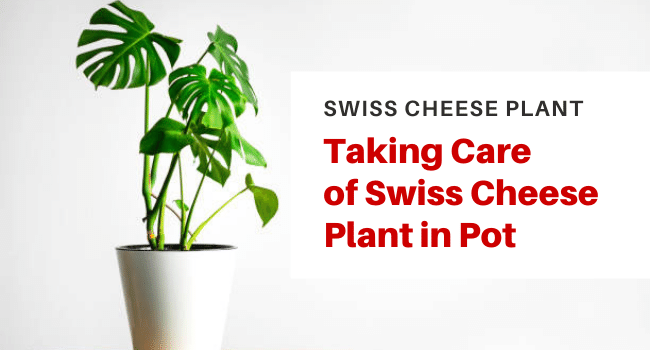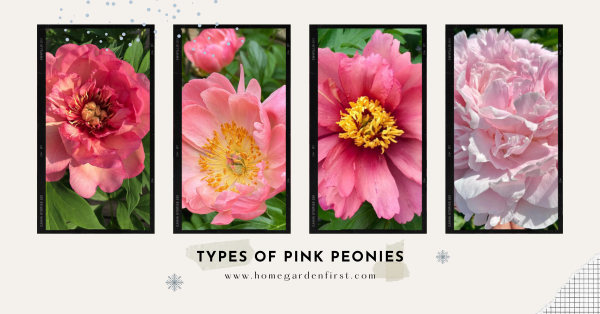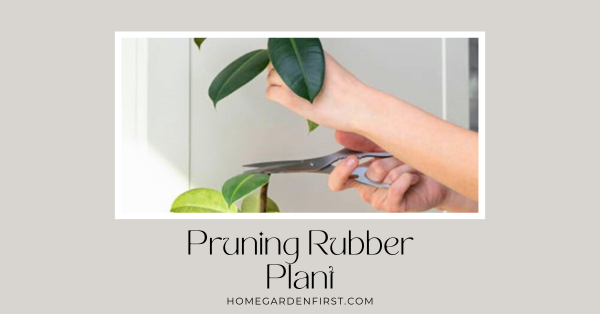How to Grow Cebu Blue Pothos in Pot | Cebu Blue Pothos Care
Give Cebu blue pothos a prominent place in your home, and it’ll surely turn heads. Learn how to grow Cebu Blue Pothos in the pot by going through this post!
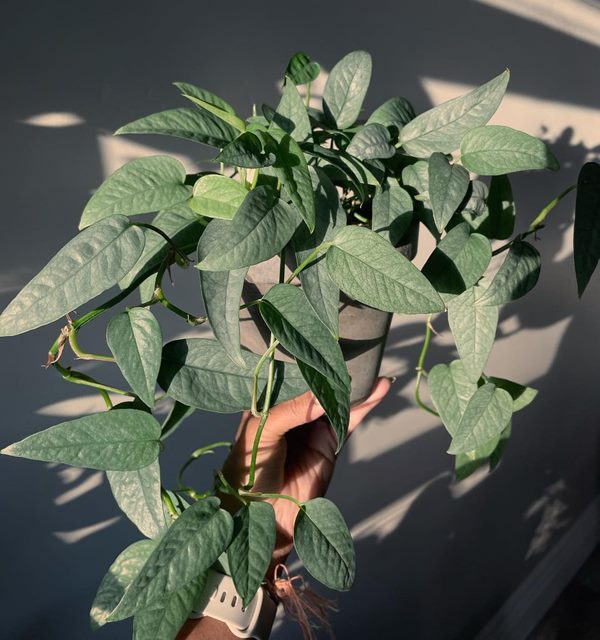
Botanical Name: Epipremnum pinnatum’ Cebu blue.’
Common Names: Blue pothos, Devil’s Ivy, Dragon-tail, Blue philodendron, and Centipede Tongavine
Cebu Blue Pothos is a unique and popular type of pothos with noteworthy traits. The silvery-bluish foliage appears to glow under the right lighting conditions, especially when the plant is young. The attractive foliage adorns the vine and is thin and long but sometimes grows oval as well. You can train the vines over a support structure or let them trail over the container or hanging basket. We have discussed all there is to know about growing Cebu Blue Pothos in the pot.
How to Grow Cebu Blue Pothos in Pot
Cebu blue pothos is one of the easiest houseplants to grow in the pot. All you need is a well-draining potting medium and a good location where it receives bright indirect light. It’s a fast grower and can grow quite big outdoors, but it’s easy to keep it contained in pots. You can either buy it from a local nursery or any trusted online gardening store. Also, you can propagate it from cuttings if you can get your hands on the parent plant.
Propagating Cebu Blue Pothos
The easiest way to propagate Cebu blue pothos is from stem cuttings, but you can also propagate it from seeds. Take cuttings from a healthy-looking stem using sharp pair of sterilized scissors. Make sure to take the cutting just below the node, as this is where the roots will start to form. Plant the cutting in a well-draining potting mix and keep it moist. You can also propagate the cutting in water and later transplant it to potting medium after roots form. Soon the roots will be established and you’ll have a new Cebu blue pothos plant.
Choosing the Container
There is no need to fret over the material of the pot but make sure that the pot has drainage holes at the bottom. A pot 8-12 inches wide and deep is large enough for a couple of years. Once the Cebu pothos outgrows the pot, you can transplant it to a pot that’s one or two sizes large.
Location
Cebu blue pothos is not a big fan of direct sunlight so place it at the spot where it receives indirect light. In winters, you can let it bask in the morning sun but make sure to protect it from the direct afternoon sunlight. Indoors the ideal spot would be near a south-facing window; outdoors, you can locate it under the shade of a large tree or any other shaded spot.
Soil
The good thing is that Cebu blue pothos isn’t choosy when it comes to soil. Any common houseplant potting mix will do the job as long as it’s well-draining. Add perlite to the mix if the soil isn’t well-draining to improve drainage. One part perlite with a three-part potting mix will do the trick.
Watering
Watering Cebu blue pothos is similar to watering any other indoor houseplant. Water thoroughly at the base and allow the excess water to drain out from the bottom of the pot. Water again when the top inch of the soil becomes dry to the touch to prevent overwatering. Depending on the weather, watering once or twice a week will suffice.
Temperature & Humidity
Normal room temperatures ranging from 65 to 80 degrees F are ideal for growth. Protect it from cold drafts of winds in winters when the temperature falls below freezing. If the air doesn’t feel dry to you, then it’s probably not too dry for the plant as well. Placing a pebble tray filled with water at the base of the plant or installing a humidifier are some ways to raise humidity levels.
Cebu Blue Pothos Care
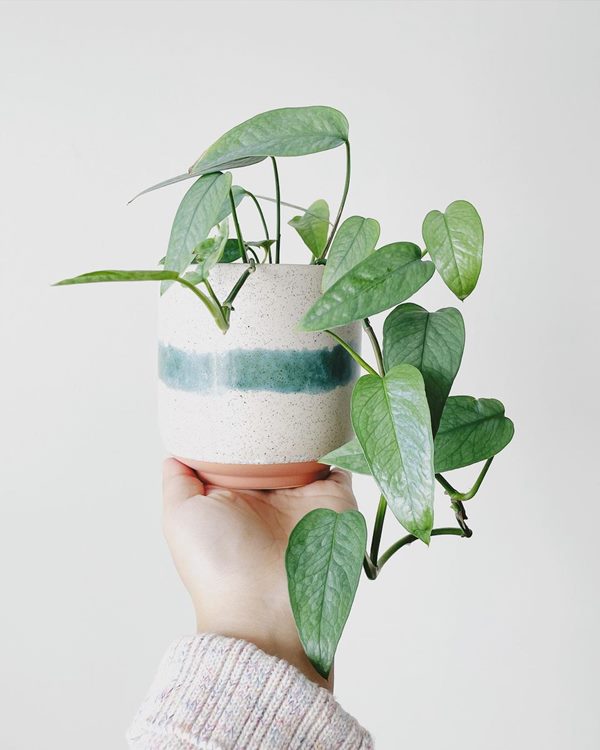
Pruning
As it’s a fast grower, occasional pruning might come in handy. Also, pruning helps to promote bushier growth and is especially needed when the plant starts to appear leggy. Cut back below the nodes, and you can use the pruned stems to propagate new plants as well. Also, cut back the dead, decaying, and yellowing parts while pruning.
Staking
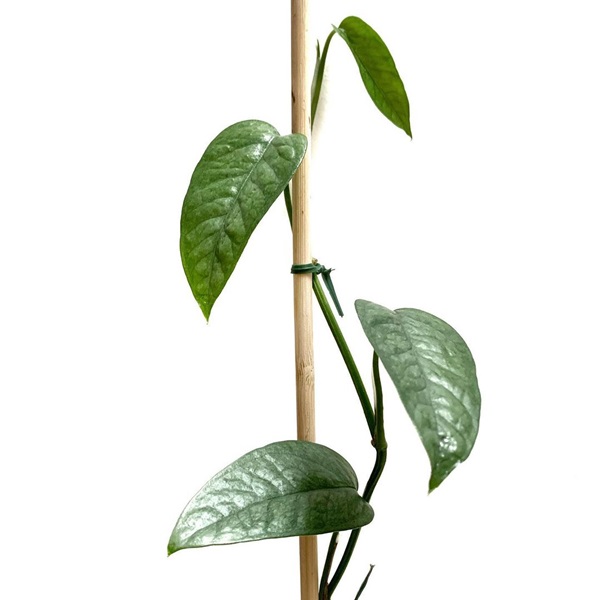
As Cebu blue pothos is a vining plant providing support to it becomes crucial. You can simply stick a moss pole in the container and train the vining stems over it. Other support structures such as trellis will also work.
Fertilizing
You can add slow-release fertilizer to the potting mix at the time of planting. Also, to boost plants growth in the growing season, amend the potting mix with liquid fertilizer diluted half to its strength. Adding fish emulsion or aged compost are some organic ways to enrich the potting mix.
Pests and Diseases
Some common garden pests such as aphids, mites, and scale can cause trouble. You can handpick these pests or get rid of them easily by spraying neem oil or soap solution over the plant. Also, root rot caused due to overwatering can cause the untimely demise of the plant.
Cebu Blue Pothos Toxicity
All pothos, including Cebu blue pothos, is toxic to pets, including but not limited to cats and dogs. It’s in the mildly toxic list of plants as per ASPCA! Although pets usually steer clear of it to be on a safer side, keep it out of their reach.
